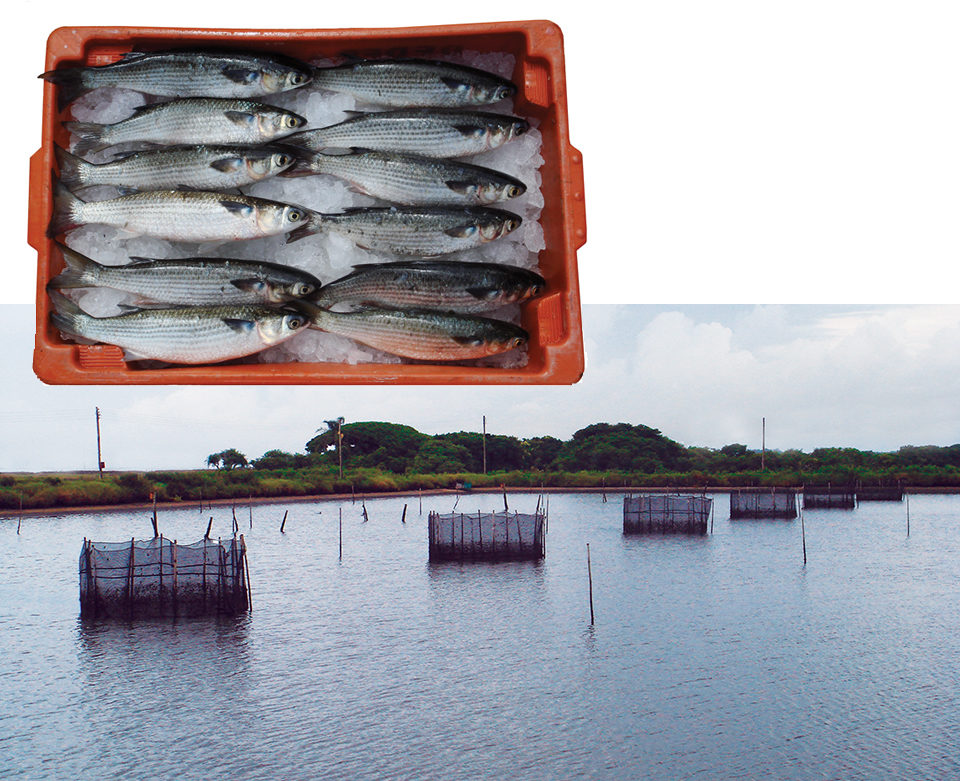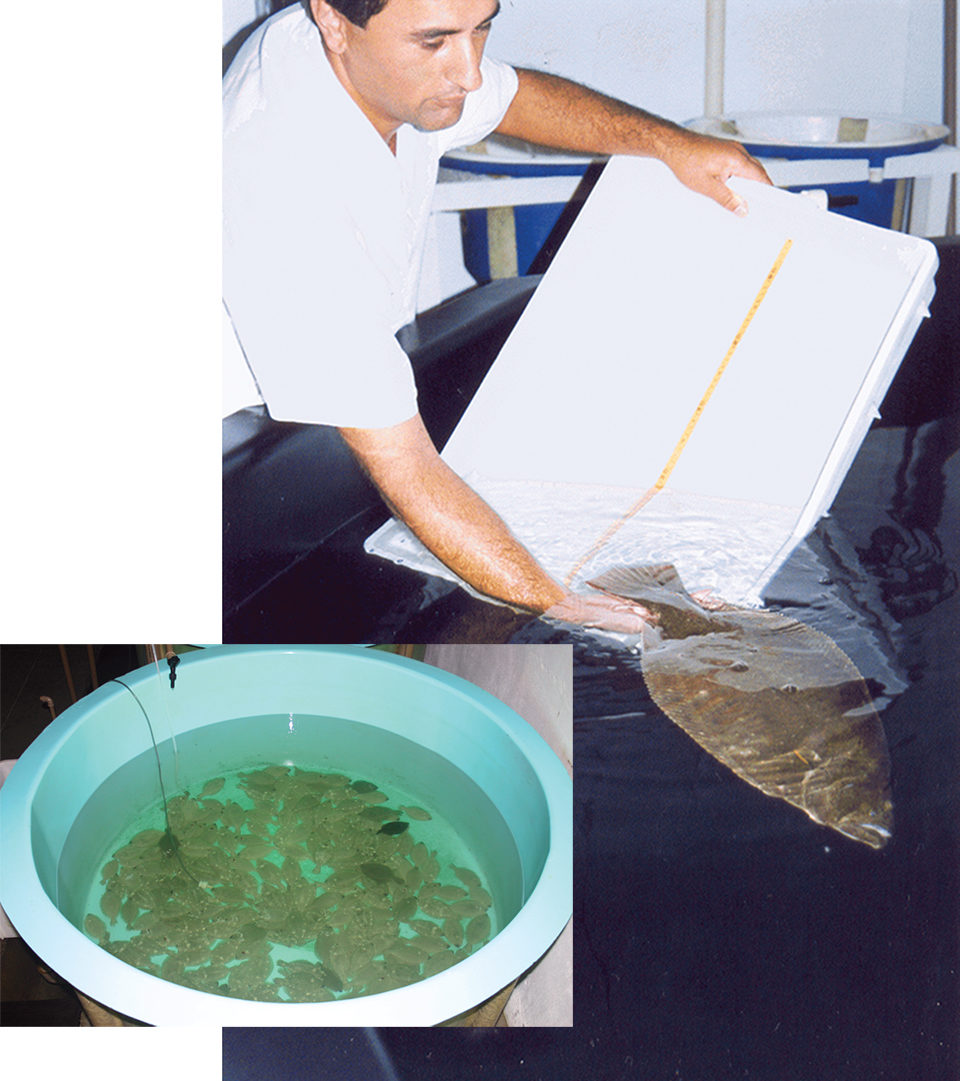Cobia most promising species

Because of its great diversity of environments and climates along with a rich fish fauna, Brazil has many potential species for aquaculture. However, despite the country’s nearly 8,000-km coastline, commercial fish culture has mainly developed inland.
Several species are successfully produced in freshwater, including native tambaqui, pacu and pintado, and exotic tilapia and carp. Mariculture is strong in the country, with a well-established industry of shrimp and mollusk production in brackish and saltwater, respectively.
Response to disease
Problems observed in the shrimp industry in the last couple of years made marine fish culture more attractive for the private sector. Shrimp farms in southern Brazil were severely affected by White Spot Syndrome Virus, and farms on the northeastern coast have reduced their stocking densities. The reduced demand for shrimp postlarvae brought difficulties to shrimp hatcheries, which are now looking at the production of marine fish fingerlings as an alternative for their activities.
Several marine fish initiatives are emerging, especially on the central and northeastern coasts with cobia (Rachycentron canatum) and some attention is devoted to grouper species. Several species are being considered on the southern coast, including snook (Centropomus undecimalis and C. paralellus), flounder (Paralichthys orbignyanus) and mullet (Mugil platanus). But it is not likely that all these species will be commercially cultured in the next couple of years.
Cobia
Cobia is the most promising species for marine fish culture in Brazil. The outstanding characteristics of cobia for aquaculture are well documented and have created much interest. The possibility to use the know-how developed elsewhere for broodstock maintenance, fingerling production and grow-out in cages, plus the fact that cobia is also a native species, have supported public and private sector investments in its production. However, despite the available knowledge, local hatcheries have not achieved a continuous and reliable production of good-quality fingerlings, which appears to be the limiting factor for cobia production.
The Brazilian government has recently issued an environmental permit for offshore cobia culture near the city of Recife, providing needed impetus for the development of marine fish culture in the country. Several universities and other research institutes are establishing a network to optimize research on cobia culture, avoid duplication of studies and maximize research capabilities.
Flounder, snook
Flounder and snook are highly prized fish everywhere. The current knowledge of snook culture in Brazil is the result of work by the research team of Dr. Vinicius R. Cerqueira at the Federal University of Santa Catarina since the early 1990s. Most flounder culture studies have been conducted at the Federal University of Rio Grande since 2000. Both research centers are responsible for most publications on marine fish culture in Brazil, but in the last few years, more research hatcheries have begun operating. This will speed up the development of culture technology for other native species.
Broodstock of flounder and C. paralellus snook are maintained year-round in captivity. Fertilized flounder eggs have been obtained through natural spawning, but hormone-induced spawning is more frequent for this species. Their larvae are readily produced using rotifers, artemia and greenwater in intensive systems. Successful weaning of fingerlings can still be improved, but fingerling production is not a bottleneck for the grow-out industry except for C. undecimalis, for which reliable production of fingerlings has been difficult.

Feeds and growth
There is a generalized concern related to the rearing of carnivorous fish like cobia, flounder and snook, mainly due to the inclusion of fishmeal and fish oil in the manufacture of their aquaculture diets. The search for vegetable ingredient substitutes is an important issue for local research teams. Improvement of feed conversion is one of the top concerns among scientists, because Brazilian environmental regulations are very restrictive, particularly concerning nutrient-rich effluents, which are not allowed.
Cobia is by far the fastest-growing species among these carnivorous fish, typically reaching 6 to 8 kg in one year under suitable production conditions. Growth rates for flounder and snook are lower, but these fish can reach almost 500 grams in one year under appropriate conditions. Cobia and snook are best suited for offshore or coastal cage grow-out, and indoor facilities are best for flounder. The grow-out of Brazilian flounder in cages has not been evaluated, but experience with turbot in Europe suggests it may be possible.
Mullet
Despite a great demand for mullet, it is not a highly prized fish. However, its low position on the food web and its adaptability to varying salinities and pond culture conditions make mullet an interesting candidate species for shrimp farms facing difficulties caused by diseases.
Mullet fingerlings can be produced in hatcheries, as demonstrated by the Fisheries Institute of São Paulo. However, most farms currently use wild-captured juveniles to evaluate mullet production in low-salinity earthen ponds. Preliminary results from ongoing farm trials have been very encouraging. The juveniles readily adapted to dry diets, and once in the culture ponds mortality was negligible. The time to reach market size remains to be determined, but recent trials have shown that fish in the 100- to 400-gram weight range grow 2 to 3 grams per week during warm summers.
Other species
Pompano, whitemouth croaker and pejerrey are also under consideration for aquaculture, although efforts toward these species are less intensive. Pejerrey and whitemouth croaker fingerlings can be produced in hatcheries, but reproduction of pompano in captivity has not been attempted.
Perspectives
Industry is ready for the development of an important marine fish culture in Brazil. Local marine fisheries are at best maintaining production levels that are half the landings of the mid-1970s. The most important fish stocks are overexploited, and fish culture seems to be the most immediate and effective way to improve production to answer the rising demand for fish.
Technology for flounder and snook fingerling production is well developed and can be implemented in both commercial fish farm and stock enhancement programs. The emerging cobia research network will support industry growth through the standardization of procedures, development of technology, student training at graduate and technical level and interaction with research institutes abroad to improve collaboration.
(Editor’s Note: This article was originally published in the May/June 2008 print edition of the Global Aquaculture Advocate.)
Now that you've finished reading the article ...
… we hope you’ll consider supporting our mission to document the evolution of the global aquaculture industry and share our vast network of contributors’ expansive knowledge every week.
By becoming a Global Seafood Alliance member, you’re ensuring that all of the pre-competitive work we do through member benefits, resources and events can continue. Individual membership costs just $50 a year. GSA individual and corporate members receive complimentary access to a series of GOAL virtual events beginning in April. Join now.
Not a GSA member? Join us.
Author
-
Dr. Luís André Sampaio
Federal University of Rio Grande
Laboratory of Mariculture
C.P. 474
Rio Grande – R.S. 96201-900 Brazil
Research Fellow, Brazilian CNPq
Tagged With
Related Posts

Intelligence
A brief look at genetically modified salmon
If approved by FDA, fast-growing genetically modified salmon will provide a safe and nutritious product similar to other farmed Atlantic salmon.

Health & Welfare
A holistic management approach to EMS
Early Mortality Syndrome has devastated farmed shrimp in Asia and Latin America. With better understanding of the pathogen and the development and improvement of novel strategies, shrimp farmers are now able to better manage the disease.

Aquafeeds
A look at India’s fish feed industry
India's fish-farming industry makes limited use of modern feeds, providing potential for the feed sector to grow. Commercial feeds are predominantly used for pangasius farming, followed by a rising popularity in carp culture.

Responsibility
A look at integrated multi-trophic aquaculture
In integrated multi-trophic aquaculture, farmers combine the cultivation of fed species such as finfish or shrimp with extractive seaweeds, aquatic plants and shellfish and other invertebrates that recapture organic and inorganic particulate nutrients for their growth.


